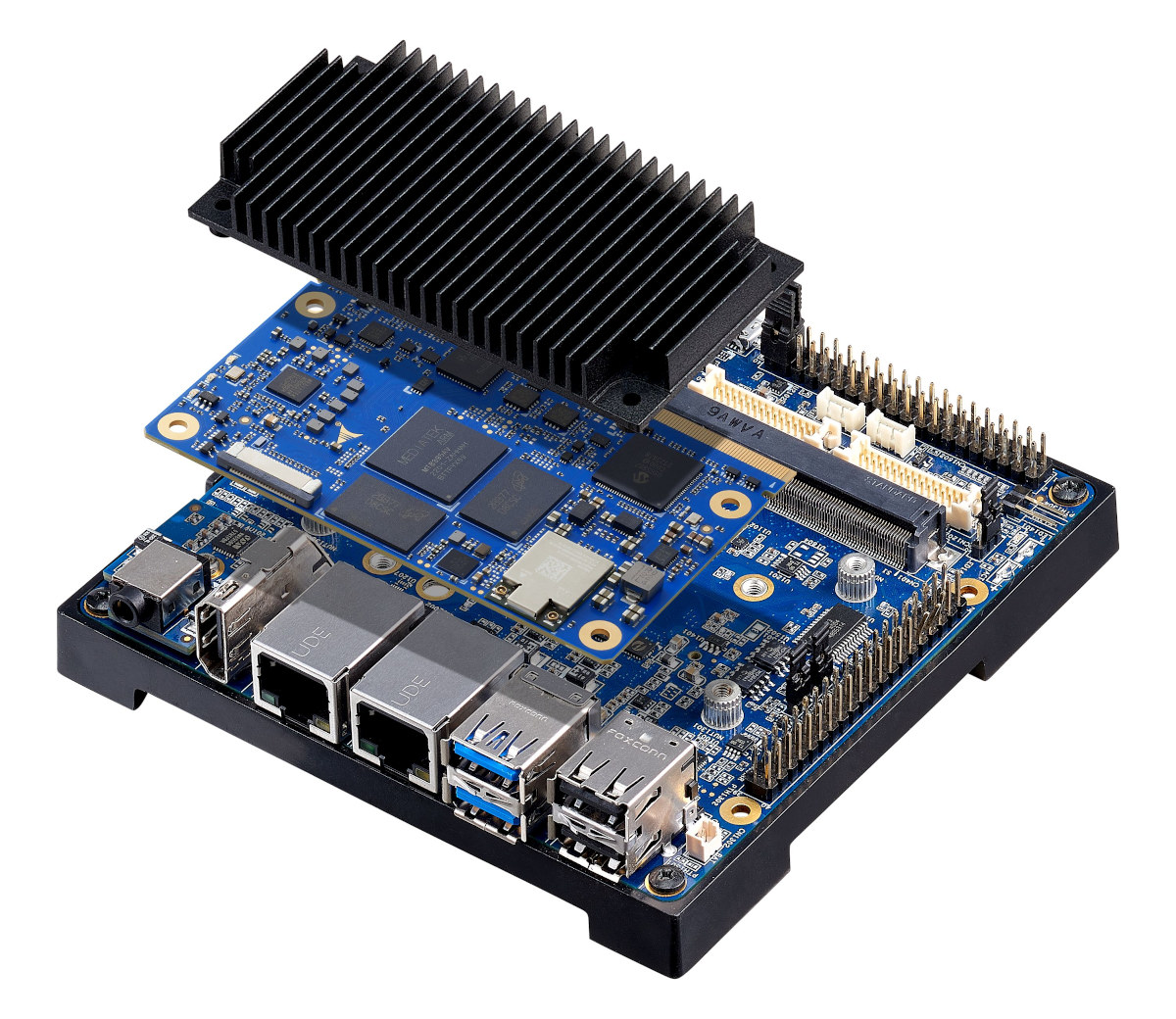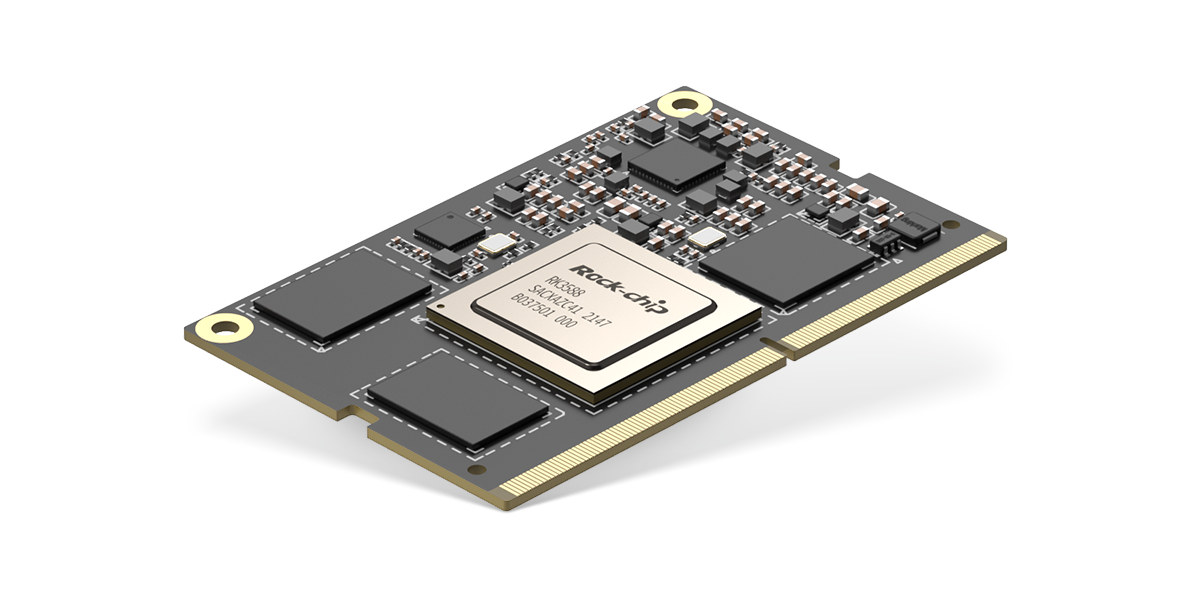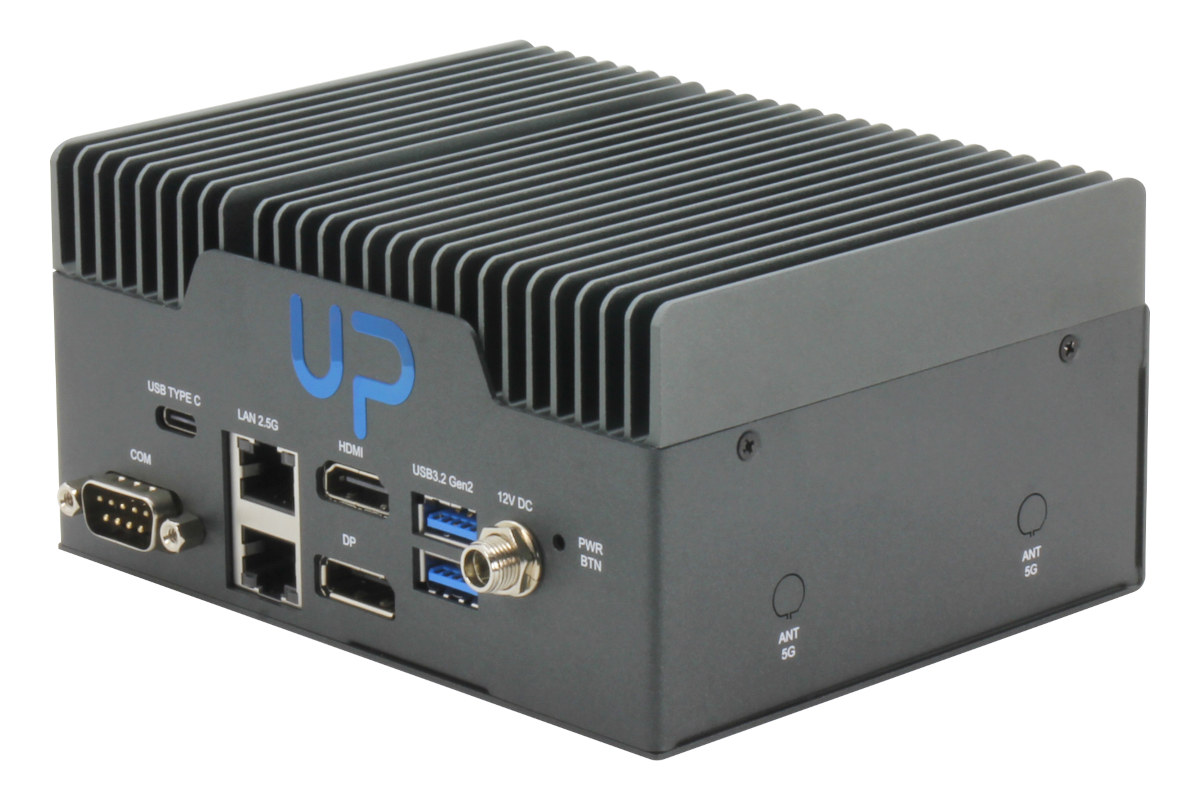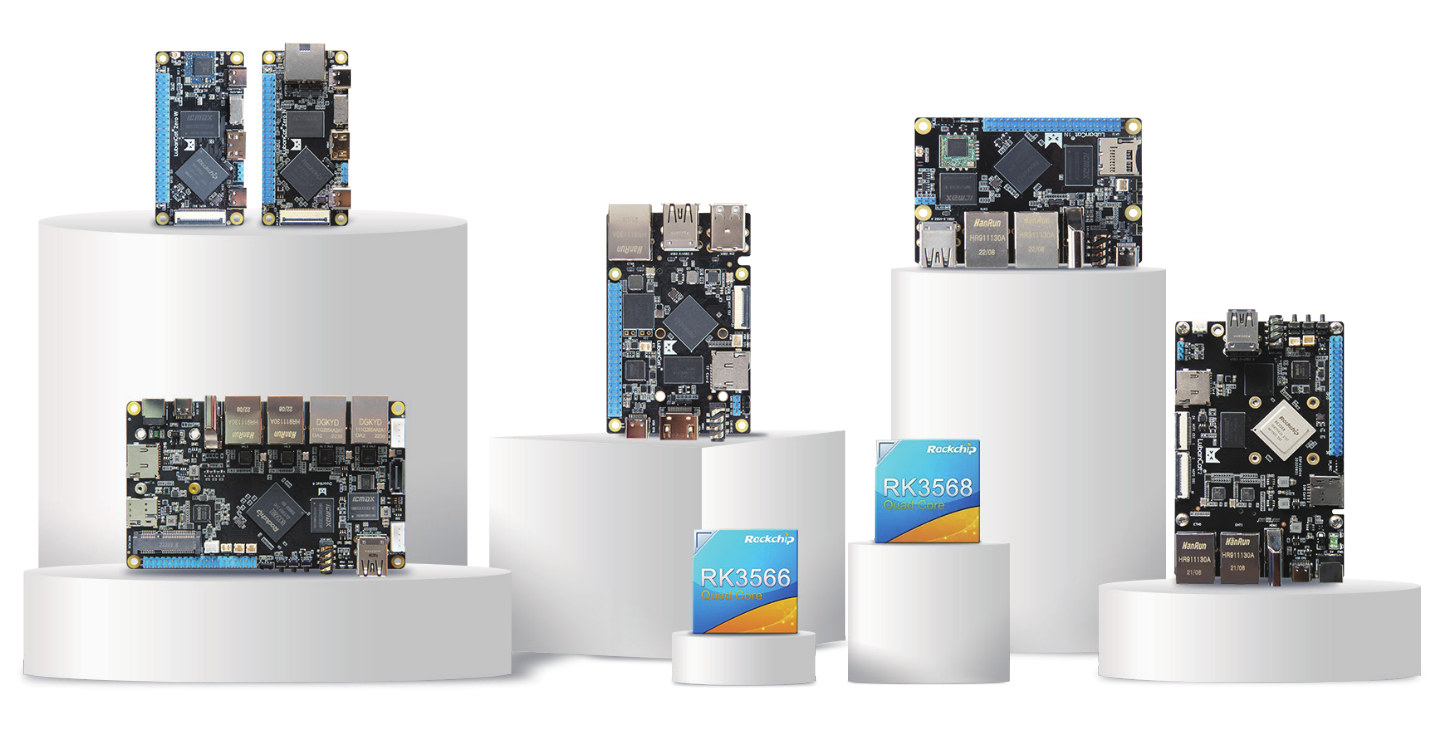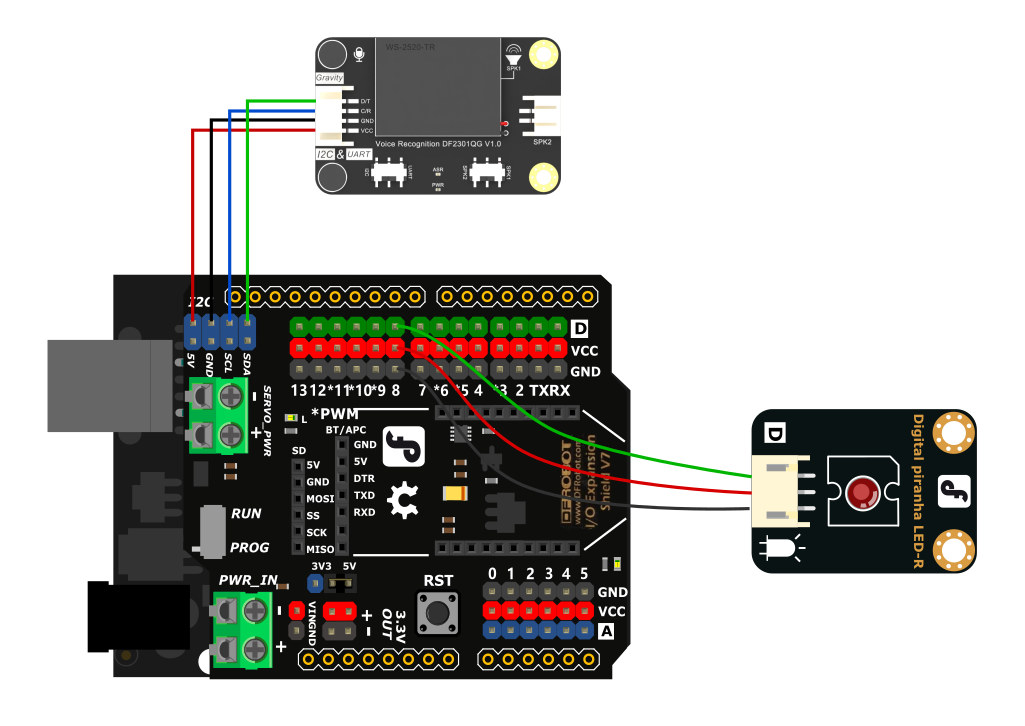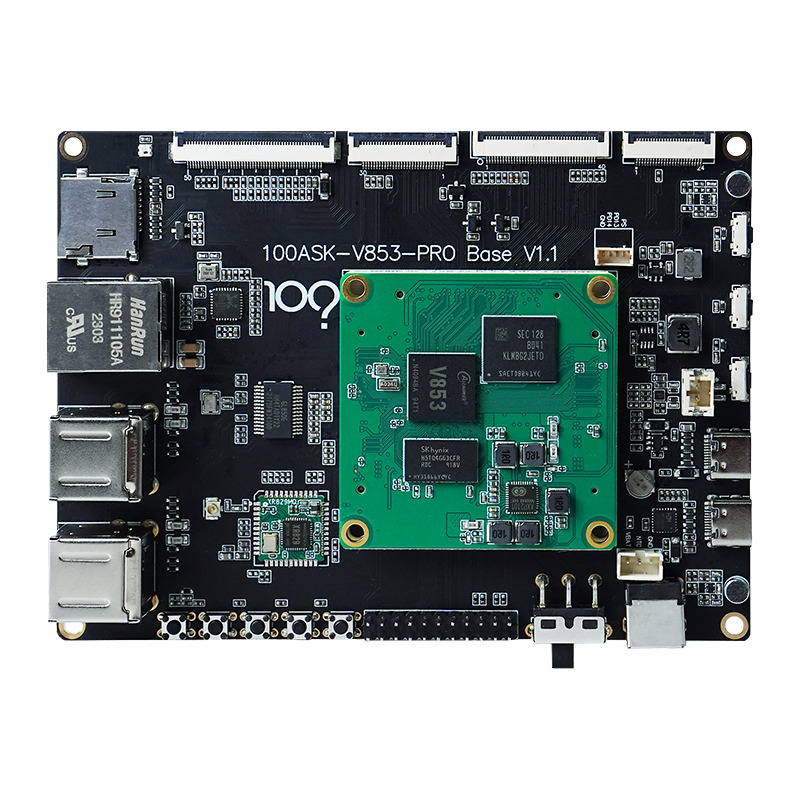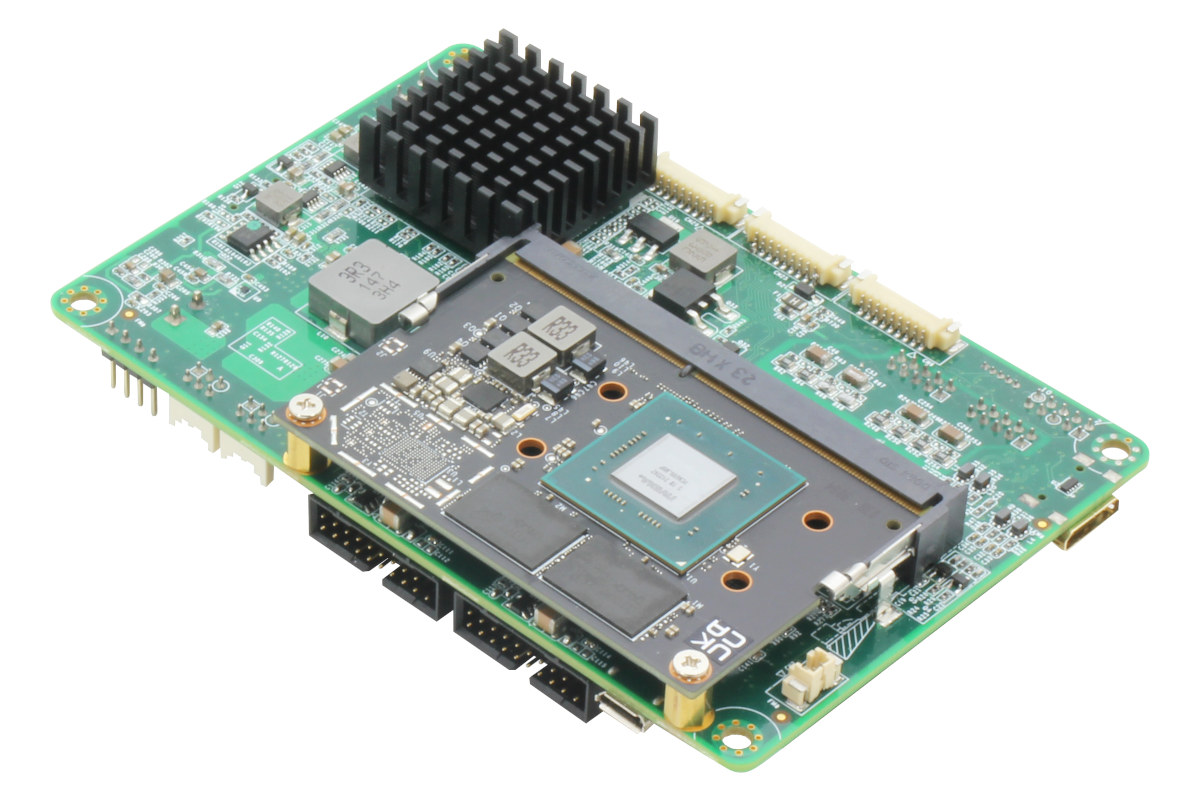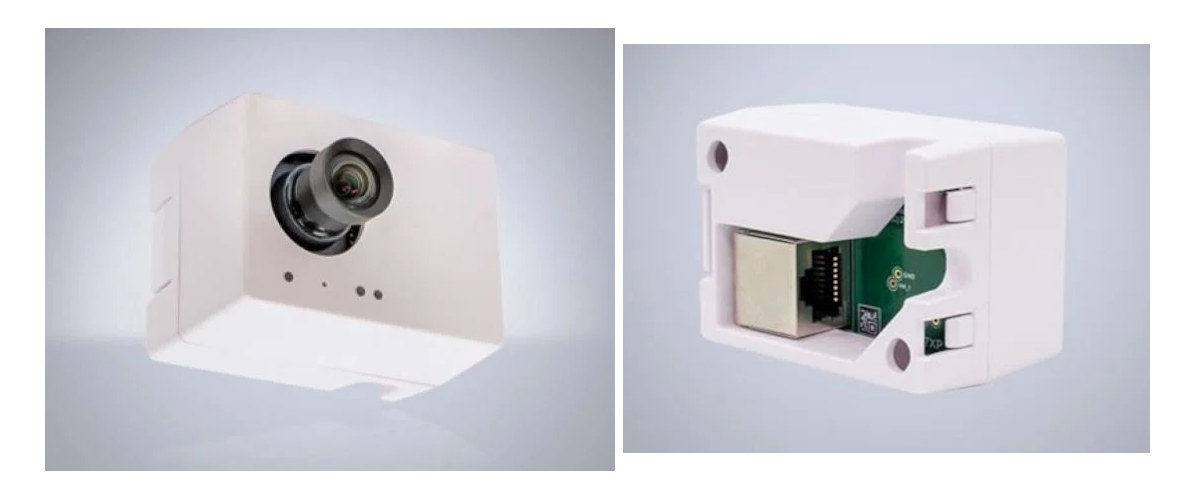ADLINK Technology’s SMARC 2.1 compliant LEC-MTK-I12000 system-on-module (SoM) features the MediaTek Genio 1200 octa-core Cortex-A78/A55 AIoT processor coupled with up to 8GB RAM and 256GB UFS storage, and powers the I-Pi SMARC 1200 development kit designed for robotics and AIoT applications. LEC-MTK-I1200 MediaTek Genio 1200 system-on-module LEC-MTK-I1200 SoM specifications: SoC – MediaTek Genio 1200 (MT8395) octa-core processor with 4x Cortex-A78 cores @ 2.2GHz, 4x Cortex-A55 cores @ 2.0GHz with penta-core Arm Mali-G57 GPU @ 880MHz with support for OpenGL ES 3.2/2.0/1.1, Vulkan 1.1/1.0, OpenCL 2.2, 5.0 TOPS NPU, HiFi 4 audio DSP, etc… System Memory – 4 or 8 GB LPDDR4X Storage – 32, 64, 128, or 256 GB UFS storage, compatible with UFS gear 2.1 Wireless – 802.11b/g/n/ac WiFi 5 2×2 MU-MIMO, Bluetooth 5.0 314-pin MXM connector with Storage – 1x SDIO (4-bit) compatible with SD/SDIO standard, up to version 3.0 Display HDMI 2.0b up to 4Kp60 Dual-channel LVDS […]
Mixtile Core 3588E Rockchip RK3588 system-on-module works with NVIDIA Jetson TX2 NX carrier boards
Mixtile Core 3588E is a system-on-module powered by a Rockchip RK3588 SoC and equipped with the 260-pin SO-DIMM connector found in the NVIDIA Jetson TX2 NX (and Jetson Nano, Xavier NX, Orin Nano modules). We’ve seen several companies make Raspberry Pi CM4 alternatives such as Radxa CM3 or Pine64 SoQuartz, and Mixtile even has its own Core 3568M SoM that can be used as a drop-in replacement for the Raspberry Pi CM4. But I had not seen companies try to make system-on-modules based on NVIDIA Jetson’s 260-pin SO-DIMM edge connector, and that’s exactly what the Mixtile Core 3588E has to offer. Mixtile Core 3588E specifications: SoC – Rockchip RK3588 CPU – Octa-core processor with 4x Arm Cortex-A76 cores @ up to 2.4 GHz, 4x Arm Cortex-A55 cores GPU – Arm Mali-G610 MP4 GPU with support for OpenGL ES3.2, OpenCL 2.2, Vulkan1.1 AI accelerator – 6 TOPS NPU with support for […]
Fanless mini PC features up to Core i3-N305 Alder Lake-N processor
AAEON’s UP Squared Pro 7000 Edge fanless mini PC is powered by a choice of Alder Lake-N SoCs from the Processor N50 up to the Intel Core i3-N305 octa-core processor and designed for IoT, automation, robotics, and industrial applications. The system is based on the UP Squared Pro 7000 4-inch SBC and ships up to 16GB LPDDR5, up to 64GB eMMC flash, and supports triple display setups with HDMI, DisplayPort, and USB-C ports. Network connectivity includes two 2.5GbE ports and optional WiFi/Bluetooth and/or 5G/4G cellular modules M.2 expansion slots. UP Squared Pro 7000 Edge mini PC specifications: Alder Lake-N SoC (one or the other) Intel Core i3-N305 octa-core processor up to 3.8 GHz with 6MB cache, 32EU Intel UHD Graphics Gen 12 @ 1.25 GHz; TDP: 15W Intel Atom x7425E quad-core processor up to 3.4 GHz with 6MB cache, 24EU Intel UHD Graphics Gen 12 @ 1.0 GHz; TDP: 12W […]
EmbedFire LubanCat is a Rockchip RK3566/RK3568 SBC family with Raspberry Pi Zero/Model B, and other form factors
As I checked out Linux 6.3 changelog earlier this morning, I noticed the EmbedFire LubanCat 2 SBC in the Rockchip section, and having never heard of the EmbedFire company or LubanCat single board computers, I decided to have a closer look. EmbedFire is a company based in China, more exactly in DongGuan, that makes a range of LubanCat single board computers based on Rockchip RK3566 or RK3568 processors, some of which partially follow Raspberry Pi Zero or Raspberry Pi 3/4 Model B form factors, while others come with custom designs. LubanCat 2 SBC specifications: SoC – Rockchip RK3568 quad-core Arm Cortex-A55 @ up to 2.0 GHz with ARM Mali-G52 2EE GPU with support for OpenGL ES 1.1/2.0/3.2. OpenCL 2.0. Vulkan 1.1, 0.8 TOPS NPU System Memory – 1GB, 2GB, 4GB, or 8GB LPDDR4/LPDDR4X @ 1560 MHz Storage 8GB, 16GB, 32GB, 64GB or 128GB eMMC flash M.2 M-key socket (PCIe 3.0 […]
Offline voice recognition module supports Arduino programming, custom voice commands
We’ve already covered inexpensive offline voice recognition modules based on US516P6 or TW-ASR ONE microcontrollers that allow people to add smarts to their projects without a network connection for improved privacy and lower latency. Those are great in theory, but at the time (April 2022) documentation was lacking or only in Chinese, and they were fairly hard to use based on some of the comments in my earlier posts. But today, I’ve noticed DFRobot is now selling the “Gravity: Offline Voice Recognition Sensor – I2C & UART” module with support for Arduino programming, and it looks fairly easy to customize as we’ll see further below. Gravity Voice Recognition DF2301QG module specifications: Voice recognition module – WS-2520-TR module with MCU – TBD 121 commonly used fixed voice commands, one-fixed wake word Support for 1 learned wake-word, 17 user-defined commands Audio Output – Built-in speaker and external speaker interface Input – Dual […]
100ASK-V853-Pro – A feature-rich Allwinner V853 board designed for AI vision applications
The 100ASK-V853-Pro board is a development kit consisting of an Allwinner V853 system-on-module board (SoM) and a feature-rich carrier board with a large number of interfaces. Allwinner V853 supports up to 1TOPS of NPU computing power and is mainly for AI vision application development. The core board contains a DDR and eMMC as well as a PMU chip (AXP2101) and is connected to the carrier board through a board-to-board connector. All the functional resources of the V853 are drawn out through the carrier board. The carrier board comes with 2-channels CSI camera interfaces as well as RGB and MIPI DSI display interfaces. Although 1 TOPS of AI computing power is not outstanding, the NPU can still be used to accelerate AI vision applications at the edge. The board also comes with four USB 2.0 ports (two Type-A, two Type-C), an 100Mbps Ethernet port, a 22-pin header for expansion, and five […]
AAEON BOXER-8224AI – An NVIDIA Jetson Nano AI Edge embedded system for drones
AAEON BOXER-8224AI is a thin and lightweight AI edge embedded system solution based on NVIDIA Jetson Nano system-on-module and designed for drones, or other space-constrained applications such as robotics. AAEON BOXER products are usually Embedded Box PCs with an enclosure, but the BOXER-8224AI is quite different as it’s a compact and 22mm thin board with MIPI CSI interfaces designed to add computer vision capability to unmanned areal vehicles (UAV), as well as several wafers for dual GbE, USB, and other I/Os. BOXER-8224AI specifications: AI Accelerator – NVIDIA Jetson Nano CPU – Arm Cortex-A57 quad-core processor System Memory – 4GB LPDDR4 Storage Device – 16GB eMMC 5.1 flash Dimensions – 70 x 45 mm Storage – microSD slot Display Interface – 1x Mini HDMI 2.0 port Camera interface – 2x MIPI CSI connectors Networking 2x Gigabit Ethernet via wafer connector (1x NVIDIA, 1x Intel i210) Optional WiFi, Bluetooth, and/or cellular connectivity […]
Sony IMX500-based smart camera works with AITRIOS software
Raspberry Pi recently received a strategic investment from Sony (Semiconductor Solutions Corporation) in order to provide a development platform for the company’s edge AI devices leveraging the AITRIOS platform. We don’t have many details about the upcoming Raspberry Pi / Sony device, so instead, I decided to look into the AITRIOS platform, and currently, there’s a single hardware platform, LUCID Vision Labs SENSAiZ SZP123S-001 smart camera based on Sony IMX500 intelligent vision sensor, designed to work with Sony AITRIOS software. LUCID SENSAiZ Smart camera SENSAiZ SZP123S-001 specifications: Imaging sensor – 12.33MP Sony IMX500 progressive scan CMOS sensor with rolling shutter, built-in DSP and dedicated on-chip SRAM to enable high-speed edge AI processing. Focal Length – 4.35 mm Camera Sensor Format – 1/2.3″ Pixels (H x V) – 4,056 x 3,040 Pixel Size, H x V – 1.55 x 1.55 μm Networking – 10/100M RJ45 port Power Supply – PoE+ via […]


